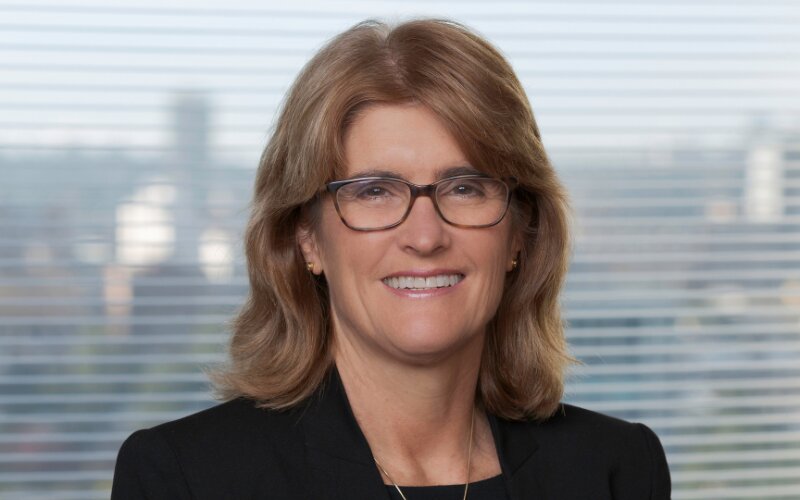Who is the man behind our impending economic downfall? Phil Lowe.
Who is steering a generation of young Australians towards financial doom? Phil Lowe.
Who essentially made a promise he couldn’t keep? Phil Lowe.
That is the sentiment of many Aussies, and I can see why.
He failed to contain inflation when it began its upward climb in 2021 and had to fix his errors by lifting interest rates by 400 basis points within a year, hurting many Aussies across the country.
But the other side of the coin is, if inflation runs free, we could dig ourselves into a deeper hole than we’re already in.
So, has Phil Lowe gone too far?
Mortgage holders have their pitchforks out
Let me give you a sneak peek into my head. As I’m writing this, I’m imagining the scene from Beauty and the Beast where all the villagers follow Gaston with their pitchforks and various weapons to supposedly kill the big, bad, scary beast. From what’s been represented in the media, it’s as though many Aussie mortgage holders are doing the same - congregating to find a way to attack Mr Lowe left, right, and centre. Mind you, not with the intent of being physical.
While I’m certainly not scheming against the evil ‘Mastermind’ that is Dr Lowe, I’m also not too chuffed about seeing my weekly home loan repayments increase from $450 to $650 (with probably more to come). It’s been tough - for me, for low income earners, and generally for anyone who wasn’t prepared for what was to come.
You only need to wind back the clock to see why many Aussies are angry in the first place.
In late 2021, Dr Lowe said rates would not rise until 2024 at the earliest and genuinely believed that would be the case. Low(e) and behold the public interpreted this as a pledge (and rightfully so) to borrow with confidence. Some seven months later, the RBA turned on their word, admitting their “promise” was an “embarrassing error” and “should have been done better”. But by then, it was too late. The RBA had set foot on its path to delivering the most aggressive rate hiking cycle in memory.
Since May 2022, the RBA has lifted rates 12 times from 0.10% to 4.10% with some major bank economists anticipating this could reach 4.60% by August. Which is crazy to think as most economists, experts in the field, and even everyday Aussies never in a million years expected it to go this high. Yet here we are.
For homeowners with an average sized mortgage, a 30-year 3.00% p.a. interest rate increasing to 7% p.a. over the past 13 months means paying an extra $1,423 in monthly interest costs. Money that most of us don’t have lying around.
Research from Roy Morgan found an estimated 1.38 million mortgage holders were ‘at risk’ of mortgage stress in the three months to April 2023 (when the cash rate was 3.60%) - the highest number since August 2008. If the RBA raises interest rates next month to 4.35%, 1.45 million mortgage holders will be considered ‘at risk’ of mortgage stress.
The numbers say it all.
So what should we do to afford the increase in our repayments? Dr Lowe apparently had all the answers at the Morgan Stanley summit on 7 June.
According to Dr Lowe, Aussies struggling with mortgage repayments should work more and spend less - which unsurprisingly sparked outrage for his tone-deaf comments. Not sure why he thought that’d be the right comment to make when many homeowners are being pushed to the brink. It was certainly enough to prompt furious responses from Reddit users.
One user said he did not understand why Dr Lowe was trying to offer “support.”
“He’s paid a million bucks a year to control one lever. And he keeps getting it wrong,’’ the user said.
“He stuffed up by keeping rates low for too long and then promising to keep them low ‘until at least 2024’. And now he’s stuffing up again by hiking rates beyond what people can sustain, probably forcing us into recession.
“And then he makes these ridiculous out-of-touch comments, showing he is completely detached from the consequences of his decisions.”
I agree. There’s no need for the man to try and provide “helpful insights” when he doesn’t know what it feels like to be on the other side - mortgage free and has almost a $1 million salary. It feels like a bit of a kick in the guts to those who are doing it tough.
Managing Director of the Finance Brokers Association of Australia Peter White expressed his confusion regarding Dr Lowe’s comments recommending that Aussies cut back spending and find additional work to pay for increased mortgage repayments.
“Clearly the Governor doesn’t realise that mortgage holders are already sacrificing as they struggle to meet the burden of 12 rate rises in just over a year,” Mr White said.
“We also found that 61% of mortgage holders have cut back on weekly spending including groceries, 37% have cancelled holidays, 27% have withdrawn from offset and savings accounts and 61% have cut back on leisure and social activities.
“So my question to Mr Lowe is this: How much more can Australians bear and why should they suffer more because the RBA failed to prepare Australians by keeping rates so low for so long when the global indicators clearly indicated rate rises were coming?”
If finance brokers and even small scale experts anticipated the situation mortgagors are facing today, it begs the question why the RBA sat on their hands for so long. Maybe it was a case of ‘rose coloured glasses.'
But should we be blaming Phil Lowe entirely on his own? Probably not. The RBA’s forecasting has been abysmal for years, and pre-pandemic, it failed to lift inflation into its target band, leaving the economy running too cold. Then, following the aftermath of the pandemic shutdowns, it failed to react appropriately to the inflation spike. The RBA, while it may seem like it, isn’t a one man show - there are over 1,000 employees and nine Board members making the decisions. It’s just easy to place our anger on one man.
Thankfully, in July last year, Treasurer Jim Chalmers called for a review of the RBA. In April 2023, the long-awaited verdict of the independent review into the RBA made clear the board of non-monetary policy experts have struggled as monetary policy decisions have become more complex. The review made 51 recommendations about how the central bank should function to better target inflation and employment, and be more transparent with the Australian people about the decisions it makes that affect them. It seems like a step in the right direction to me.
Recession? Flip a coin and see what happens
Has the RBA simply gone too hard, too fast?
It’s looking more likely that the answer to Australia’s stubborn inflation woes will be the onset of a recession. And if New Zealand is anything to go by (it entered a technical recession on 15 June), hiking rates too far can cause an economy to slip into a recession. A technical recession is defined by two consecutive quarters of decline in gross domestic product.
The risk of Australia’s economy slipping into a recession has risen sharply given the RBA’s decision on 6 June to continue with its rate hikes, which surprised both borrowers and economists.
For a year, Dr Lowe has been talking of a orchestrating a ‘soft landing’ for the economy, which involves successfully navigating a narrow path to lower inflation while keeping unemployment near 50-year lows. But the governor's tone has since changed, warning the narrow path would be bumpy. A hard landing seems more and more plausible.
Data released by the Australian Bureau of Statistics (ABS) revealed the economy grew by a mere 0.2% in the March quarter as struggling households ran down savings and cut back on spending.
CommBank economists puts the odds of a recession this year at 50%, predicting GDP growth to slow to an annual rate of 0.7% in the last quarter and the jobless rate picking up to 4.7% in mid-2024.
Logic dictates that with the risk of at least one more 25 basis point hike and several previous interest rate hikes yet to hit household bank accounts, and the economy already at stall speed, economic growth will deplete later this year.
“The risk of a hard landing for the economy has grown today [following RBA June meeting],” said Gareth Aird, CommBank Head of Australian Economics.
“And the chances of 'keeping the economy on an even keel as inflation returns to the 2–3% target range' have been further diminished.
"Monetary policy is now deeply restrictive, which means by definition the economy will slow materially from here.”
AMP Deputy Chief Economist Diana Mousina said the RBA runs the real risk of tipping the economy into a recession, assigning a 50% chance of doing so in the next 12 months.
“The 4% increase in interest rates since May last year means it is becoming much harder for the economy to remain on an 'even keel' as the RBA and most are forecasting,” Ms Mousina said.
“We don’t think it is necessary to induce a recession to Australia to see the inflation outcomes the RBA would like.
“But it looks like the RBA has grown more impatient in waiting for inflation to slow and has given up on the argument about the lagged impact of interest rate hikes.”
There are already increasing signs that the economy is weakening – retail sales have slowed, building construction is collapsing, and this is all occurring at a time when the inflation indicators are pointing down. Yet, the RBA is determined to do whatever is necessary to tame sticky inflation, even if that means crashing the economy into a wall.
Speaking to Savings.com.au, PRD Chief Economist Asti Mardiasmo said for a country to really ‘fall’ you need two things - most of the economy in negative equity and no wage growth.
“At present we only have a small population in negative equity and we do have wage growth,” Dr Mardiasmo said.
“So by that count, we should at this specific point in time technically be okay to survive a recession. The key word being survive, not thrive.
“However this is on a national aggregate basis – there will be those different demographics, who are way more vulnerable than the aggregate that will struggle. This is where the concern lies.”
Dr Lowe has consistently reminded us that the Board will watch the data to determine how many more rate hikes are needed to cool inflation without crushing the economy. But therein lies the problem. Most data periods refer to some months ago, while interest rate increases can take a few months to hit household hip pockets. Without updated data around how the consumer is responding to monetary policy, this could lead the RBA to lift rates in a recession. This is why Dr Lowe describes his task as being “clouded in uncertainty”.
And although it’s not Dr Lowe’s fault he’s working off a lack of data, he should consider pausing the rate hikes to get a clearer gauge of their intended affect - how they’re affecting households and the broader economy.
Only time will tell whether the RBA pushes us down the deep black hole that is a recession. Even so, if a technical recession did eventuate, it’s likely to be a short-lasting event - one can only hope.
Inflation is still too damn high
Has Phil Lowe angered Australian mortgage holders? Yes.
Has the aggressive rate tightening cycle lifted the possibility of a technical recession? Yes.
Is inflation still too damn high that Dr Lowe has enough reason to continue hiking rates? Yes.
Inflation is proving to be persistently stubborn, with the annual rate of the monthly CPI indicator rising to 6.8% in the 12 months to April. It marks an increase from the March figure of 6.3%. And while inflation has supposedly peaked in Australia, it doesn’t seem to be coming down as fast as one hoped.
In the June post-meeting statement, Dr Lowe said the RBA remains absolutely committed to return inflation to target, rather than suffer the much larger costs of more persistent high inflation later down the line.
“High inflation makes life difficult for people and damages the functioning of the economy,” he said.
“It erodes the value of savings, hurts family budgets, makes it harder for businesses to plan and invest, and worsens income inequality.
“And if high inflation were to become entrenched in people’s expectations, it would be very costly to reduce later, involving even higher interest rates and a larger rise in unemployment.”
And he’s right.
High inflation is ‘corrosive’ to say the least.
If the RBA avoided lifting rates now, it would likely cause even more problems for Australians and the economy as a whole further down the track.
While some households would have avoided, mind you for a short period, the financial pressures that come with higher mortgage repayments, the short-term gain would have been at a much higher medium-term cost. The RBA would be forced to lift interest rates even higher to bring inflation back down to the 2-3% target range.
High inflation can also drain consumer confidence and a household’s confidence to spend money. The most recent Westpac consumer confidence report revealed a modest 0.2% rise in June to 79.2, yet has held at ‘recession lows’ for the last year.
Westpac Chief Economist Bill Evans said inflation remains the dominant drag on confidence, well ahead of interest rates.
“News on inflation is assessed as by far the most negative issue; followed by interest rates; while assessments of economic conditions; employment and the Budget show significant improvements relative to the last read on consumer news recall back in March,” Mr Evans said.
Inflation and the cost of living are interconnected concepts. A rise in inflation reflects accelerating growth in the cost of goods and services, which in turn, erodes purchasing power. High inflation means bigger rises in the price of many things we need for daily living, from how much we’re paying at the supermarket, to electricity, and to how much it costs to fill up our tanks.
If it means hiking rates a few more times to thus bring inflation down so our daily expenses don’t cost an arm and a leg, maybe Dr Lowe is on the right track?
The sooner inflation is tamed, the quicker the value of a consumer’s dollar will go back to normal, and the sooner we will see rate cuts (fingers crossed).
For now, we have to survive with what we’ve got
Do I think the RBA has a reason to continue hiking rates? Maybe so, given inflation remains rampant and has a direct effect on the cost of living - which we all know is just ridiculously expensive at the moment.
But, I do believe there is enough evidence to support a pause to allow existing rate hikes to flow into the economy and households. Tacking on another couple of rate hikes may seem like the right choice to the RBA, but maybe it’s time to stop and smell the roses? Especially since more interest rate rises could push the economy to the brink.
And then there’s the mortgage holders, renters, and everyday Aussies that are struggling - that’s the reality - whether the RBA wants to fully acknowledge that or not.
Even Dr Mardiasmo is unsettled by the RBA’s decision making, especially since the May 2023 Statement of Monetary Policy (SOMP) suggested the policy rate expectations would peak at 4%.
“Beforehand I felt I had a pretty good handle on monetary policy and its direction, as all SOMPs for the past 12 months have indicated a peak of 4%, and have not really changed,” she said.
“However we have gone past this now and I am not sure where we will land. Saying ‘we are still not at peak’ doesn’t fly anymore.”
It certainly seems as though Phil Lowe has pushed one too many buttons, mine included.
Advertisement
Buying a home or looking to refinance? The table below features home loans with some of the lowest interest rates on the market for owner occupiers.
Image by the Reserve Bank Australia







 Hanan Dervisevic
Hanan Dervisevic
 Emma Duffy
Emma Duffy

